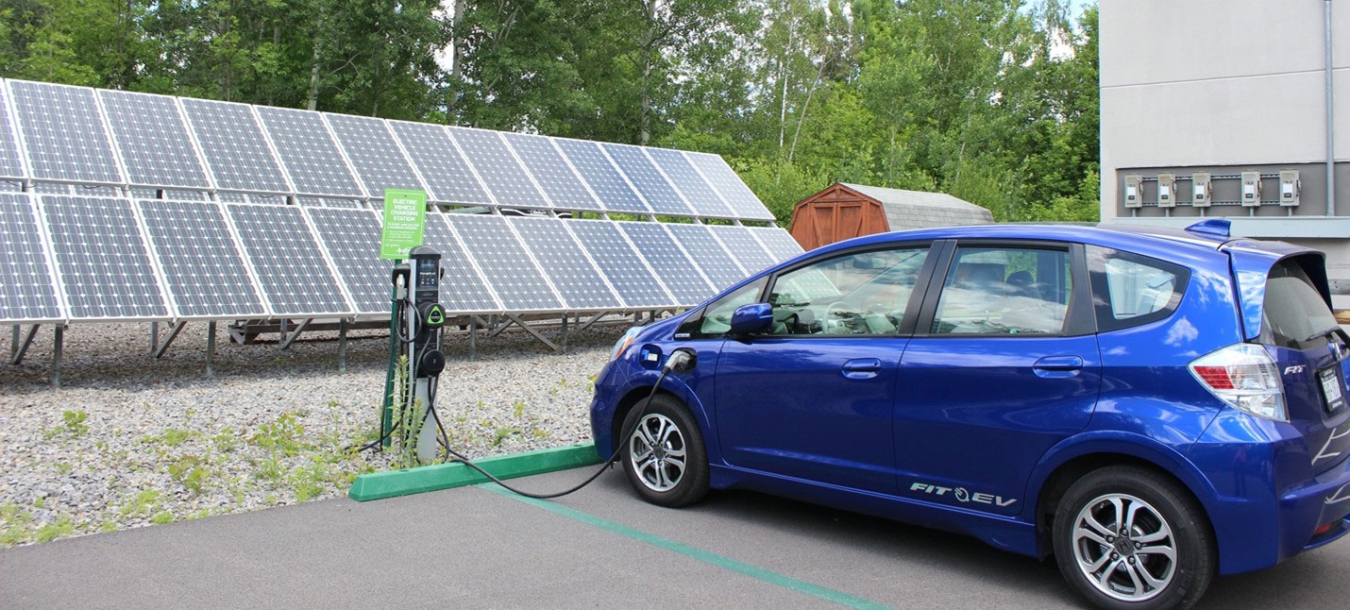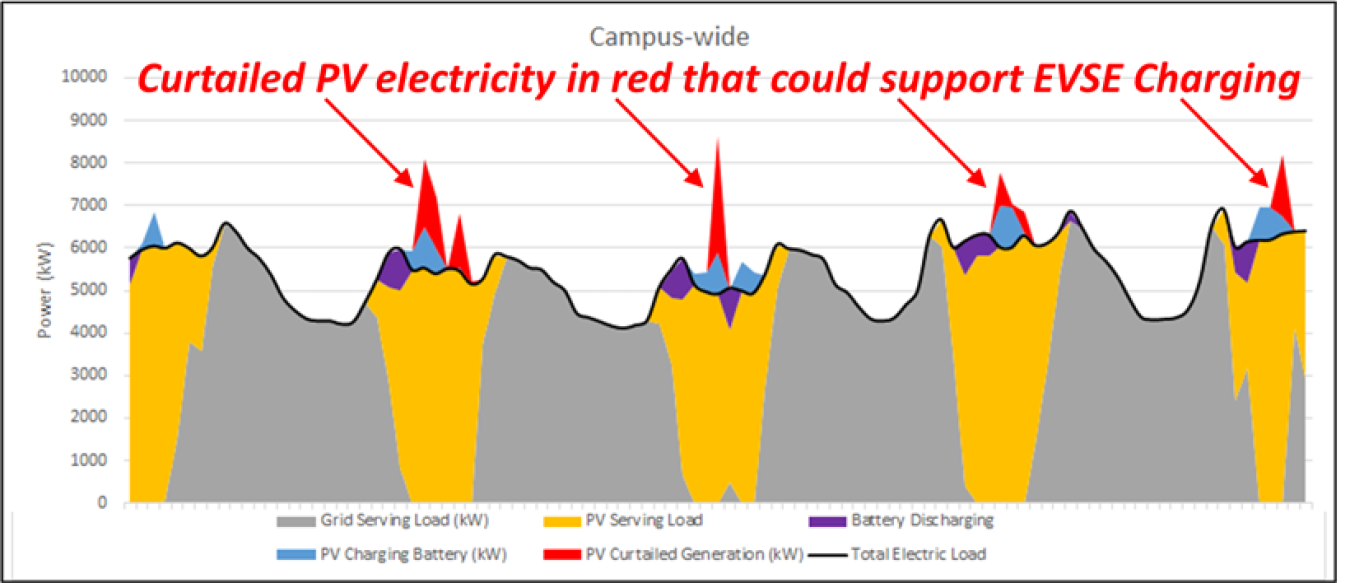
Behind-the-meter PV generation with an EV charging station. Photo courtesy of Marine Corps Base Camp Blaz.
The National Renewable Energy Laboratory (NREL) partnered with Naval Facilities Engineering Systems Command (NAVFAC) to plan for electric vehicle (EV) charging station deployments and solar photovoltaic (PV) installation at the new Marine Corps Base Camp Blaz in Guam. NREL is helping the Marine Corps design electric vehicle supply equipment (EVSE) installations through its Tiger Team, supporting the deployment planning for rooftop PV across the entire base using the Renewable Energy Optimization Tool (REopt), also developed in coordination with the Federal Energy Management Program (FEMP). Camp Blaz is planned to begin operations in 2028 and will have a total of 115 dedicated government-owned electrical vehicles, each with a dedicated EV charging port at their designated building. Additionally, up to 118 EV charging ports will be installed across the base to support approximately 5% of all privately owned vehicles (POVs). Together, these 233 ports will support nearly 1 MW of charging capacity for both fleet electrification and workplace charging needs throughout the base. In addition to the EV charging stations, NREL is also supporting the deployment planning for over 12 MW of rooftop PV across the entire base, which has an anticipated peak load of over 8 MW.
Throughout all electric grids, electricity must either be consumed the same moment it is generated or stored for later use. This means that on a small island like Guam, excessive PV generation can cause an imbalance between the demand and supply of electricity, potentially decreasing power quality or grid reliability. As a result, electric utility Guam Power Authority (GPA) does not offer net-metering rate options for Camp Blaz and will not permit the base to back-feed electricity into the grid. This means that when PV generation exceeds the total base-wide building load, the excess PV energy must be curtailed, effectively losing the value of that energy. This curtailment is typically mitigated through the installation of an energy storage system (ESS) such as stationary batteries that charge up during periods of excess generation (noted in the graph below in blue). This ESS can discharge to support higher periods of building energy use, such as during the mornings or evenings (noted below in purple). However, these systems can be costly to install and depending on their capacity, could still require some PV curtailment (as indicated by the PV Curtailed Generated [kw] peaks in the image below).

Simulated campus-wide load profile for Marine Corps Base Camp Blaz with PV and ESS operations
NREL engineers and FEMP fleet EVSE experts are further mitigating PV curtailment by coordinating with fleet and facility resources to use a smart charge management (SCM) solution. By understanding when a vehicle needs to charge and how long the charging session will take, SCM controls are able to time fleet charging with PV generation, thereby reducing the need for ESS investments and mitigating PV curtailment. This helps to ensure Camp Blaz can fully maximize the value of their PV systems, deliver the cleanest energy to their fleet vehicles, and support GPA's goals for grid reliability.
Project Highlights
- Up to 233 EVSE charging ports will be installed for government-owned vehicles and POVs with a peak charging demand of up to 2 MW
- Up to 12 MW of rooftop PV will be installed at buildings across Camp Blaz.
Key Benefits
- Using smart charge management helps time EV charging events during periods of high PV generation, reducing PV curtailment and utilizing clean energy
- Utilizing energy storage solutions such as onsite batteries help effectively store PV energy to support increased energy needs and building loads in the mornings and evening.
Impacts
- Of the more than 18,000 MWh of clean electricity that is expected to be generated by the PV systems throughout Camp Blaz, up to 1,082 MWh of that electricity (6%) could be lost to curtailment
- The deployment of both the ESS and SCM EV charging solutions could mitigate the curtailment of generated PV energy, resulting in up to $280k of savings annually, based off a $0.262/kWh blended rate.

